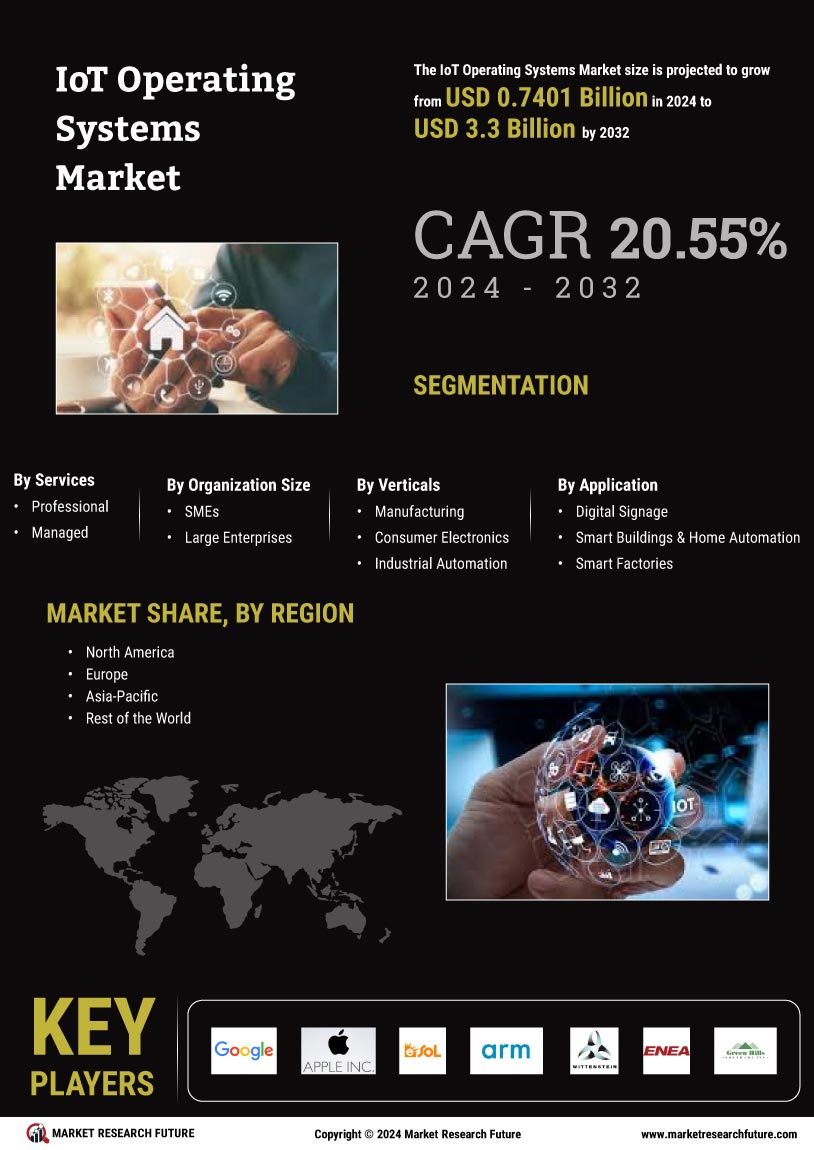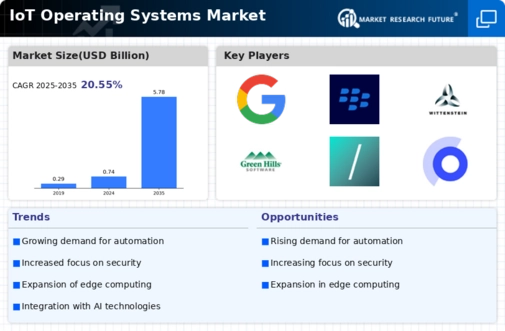IoT Operating Systems Market Summary
As per Market Research Future Analysis, the IoT Operating Systems Market is poised for significant growth, expanding from USD 0.74 Billion in 2024 to USD 5.78 Billion by 2035, with a CAGR of 20.55% during the forecast period. The market was valued at USD 0.74 Billion in 2024, driven by the increasing adoption of IoT systems across various business sizes and sectors. The demand for intelligent decision-making and real-time processing at the edge is further propelling market growth, particularly in healthcare applications due to the COVID-19 pandemic. The professional services segment leads the market, while large enterprises generate the most revenue, although SMEs are expected to grow significantly. North America dominates the market, followed by Europe and Asia-Pacific, with the latter projected to grow at the fastest CAGR.
Key Market Trends & Highlights
Key trends driving the IoT Operating Systems Market include:
- Market Size in 2024: USD 0.74 Billion; projected to reach USD 5.78 Billion by 2035.
- CAGR of 20.55% during the forecast period (2024 - 2032).
- Professional services segment dominated the market, particularly in healthcare and manufacturing.
- North America holds the largest market share, with significant growth expected in Asia-Pacific.
Market Size & Forecast
| 2024 Market Size | USD 0.74 Billion |
| 2035 Market Size | USD 5.78 Billion |
| CAGR | 20.55% |
Major Players
Key players include Google Inc. (U.S.), Apple Inc. (U.S.), ESOL Co. Ltd. (Japan), BlackBerry Limited (Canada), and Microsoft Corporation (U.S.).

















